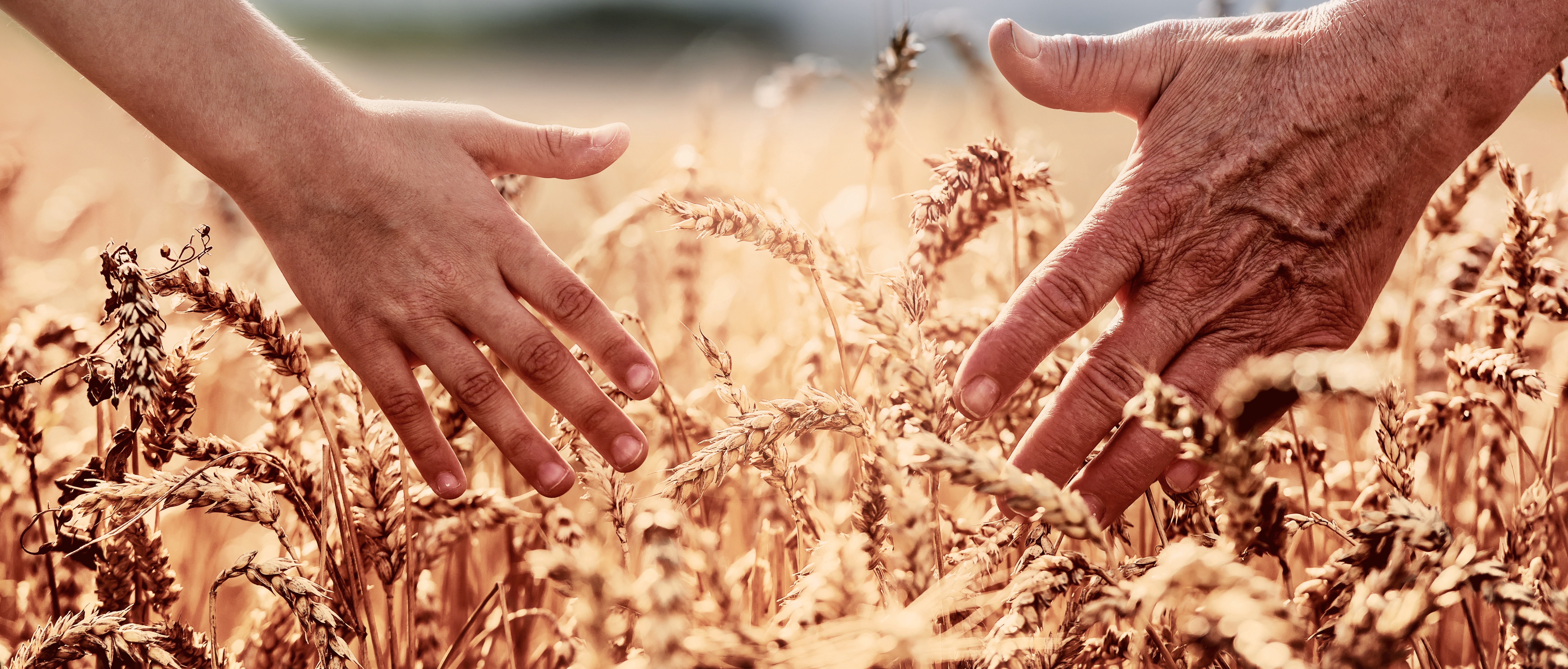Farm Transfer to Promote and Perpetuate Sustainable Agriculture in the Midwest and Central Plains
A cross-cutting problem in agriculture that gets in the way of rebuilding local food systems is the routine cycle of farms needing to transition from one farming generation to the next. The path of least resistance for a farm owner who does not have someone in the family to take over the farm (a family successor) is to rent and eventually sell to an established farmer whose big farm is getting bigger, or to a developer. This pattern repeated across the land consolidates small and medium food-producing farms into bigger farms.
"Nothing works in isolation with farmland," says Mary Swander, a writer on farm transfer and the Poet Laureate of Iowa. "You think, 'Oh, this is just my farm. It’s a little farm. If 120 acres gets used for a housing development, what difference will it make? Or, this is 120 acres, if it gets sucked up in a big corporate farm, what difference?' Well, that eliminates a family that’s not living on that farm, so they’re not sending kids to that school. Without a school, community begins to go downhill and evaporate. There’s a family that’s not going into town to buy nails and screws and hammers from the local hardware store, so that’s a business that goes out of business, so it has a real reverberating effect. It’s way bigger than one family."
States and localities across the country started taking action in the 1990s to address this convergence of farms liquidating, barriers for new farmers, and thus rural communities shrinking.
Research
Our study assesses best practices by local, state, and federal programs that aim to instead support farm owners in transferring to a new generation of farmers, to keep land in agriculture, re-cultivate rural communities, and build regional food systems.
Indiana’s status as one of few states to have taken no action in this direction inspired our research group’s successful proposal to the USDA’s sustainable agriculture division in 2016. Since then, the timeliness of this focus has been reinforced by conversations our group is developing with service providers and other stakeholders, including land grant university Extension systems, state departments of agriculture, farm bureaus, farmers unions, regional and national NGO’s, and USDA-FSA. Our findings spotlight successful strategies for farm linking and farm transfer programs, and for their investors, funders, policy-makers and decision-makers. We are also learning directly from farm owners who are transferring their farms to an unrelated beginning farmer.
Project Findings
Next-generation farmer and rancher land needs
Tracking progress in farm succession programming
Supporting farm transfers to next-generation producers
Entering farmers face a shortage of on-farm housing
Policy Incentives
In response to this set of problems, some states and the federal government have created financial incentive policies to help new farmers gain access to land. These incentives have various mechanisms; many of them pay a farm owner who chooses a beginning farmer, a veteran farmer, or a farmer of color as their farm’s next operator or owner, over an established farmer. These innovative and promising policy mechanisms now have several years of experience and are surging in popularity around the country, and yet their impacts and reach have not been assessed. Service providers and policy-makers need information about the incentives’ effects and their patterns of participation and non-participation. We recently worked with the American Farmland Trust to propose this needed assessment to the USDA National Institute of Food and Agriculture Agricultural Economies and Rural CommunitiesSmall- and Medium-Sized Farms program.
Project Team: Julia Valliant, James Farmer, Mary Fund, Kathy Ruhf, Kevin Gibson, Wyatt Fraas and Maria Marshall.
Institutional Partners: Indiana University Ostrom Workshop, Kansas Rural Center, Land For Good, Center for Rural Affairs, and Purdue University Institute for Family Business
Funder: United States Department of Agriculture: Sustainable Agriculture Research and Education: North Central Region, Project #LNC16-377
Media Links
Anderson, Darrell. (2019, 15-19 July). Farm to Fork. The Road to Transition.
Young, Kayte and Madelyn Beck. (2018, October 17). Handing off: The reality of land transfer between older, younger farmers. Harvest Public Media.
Bryniarski, PJ and Kayte Young, with Kira Santiago, Dave Bishop, Allison Quantz, and Julia Valliant. (2018, September 13). Kira Santiago talks flowers and farm legacies with Dave Bishop. Earth Eats, Indiana Public Media.
Stinson, Cole and Kayte Young, with Denise O’Brien, Kate Edwards, Allison Quantz, and Julia Valliant. (2018, August 31). For the love of farming. Earth Eats, Indiana Public Media.
Young, Kayte, with Mary Swander, Grant Pershing, John Byers, and Julia Valliant. (2018, March 23). Matchmaking – farmers to farmland. Earth Eats, Indiana Public Media
Shanahan, James. 2019, January 23. Through the Gates at Indiana University Podcast, Episode 111: Sustaining Hoosier Farms with James Farmer and Julia Valliant


